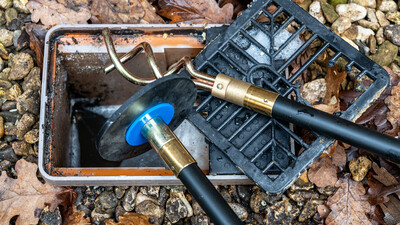What is a rodding eye?
A rodding eye (also sometimes called a rodding point) is an access point for inspecting and cleaning of a surface water (stormwater) drain. It features a short length of pipe set at an angle of 45 degrees to the main pipe, and an airtight oval cover secured with screws is set at 45 degrees to the short pipe so that its face is parallel to the main pipe. This also facilitates access to the main pipe for drain rods and inspection equipment.
Why is a rodding eye sealed?
There are two reasons why a rodding eye is sealed. First, to prevent debris from entering the drain and causing blockages and secondly, to prevent foul odours caused by obstructions and blockages from escaping.
Rodding eye installation
When installing a rodding eye, the first thing to do is to ensure compatibility of all the components. We recommend assembling all the parts before commencing with the build to make sure installation will be straight forward.
Before connecting the body to the pipework, check that you have the correct distance so that the rodding eye sits flush with the floor. You can then connect the body to the pipework. Depending on the existing pipework or what has already been installed, you may need a connector or adapter. Check that the fit is correct and there is no chance of leakage. Rodding eyes are recommended to be installed every 22m or so, to ensure that there is suitable access to drainage pipes for inspection.
Rodding eyes and legal requirements
It is always good practice to provide access to drains via manholes, inspection chambers and rodding eyes at regular intervals and at significant points in the pipework such as discharge stacks and changes of direction, fall or diameter. They should provide access to any lengths of pipe that are inaccessible from other parts of the system and be placed higher than the spillover level of appliances.
To gain consent from local water authorities, access points should be located outside and at least 500mm away from the building. Where there are already installed drains this may require amendments to the design of the building, although some authorities may agree to repositioning access points to accommodate a new building.
This information is brought to you by Drainfast, one of the UK’s leading providers of specialist drainage supplies and related products. If you’re reading this article, it’s possible that you are looking at installing, upgrading or fixing a problem with a drain access point. If so, our experts are here to help you. Call us on 01730 774000 or email [email protected] for prompt, friendly advice and support.

Written by
Mark Chambers
Marketing Manager
As Marketing Manager, Mark plays an active role in running strategic projects to increase our brand profile.

